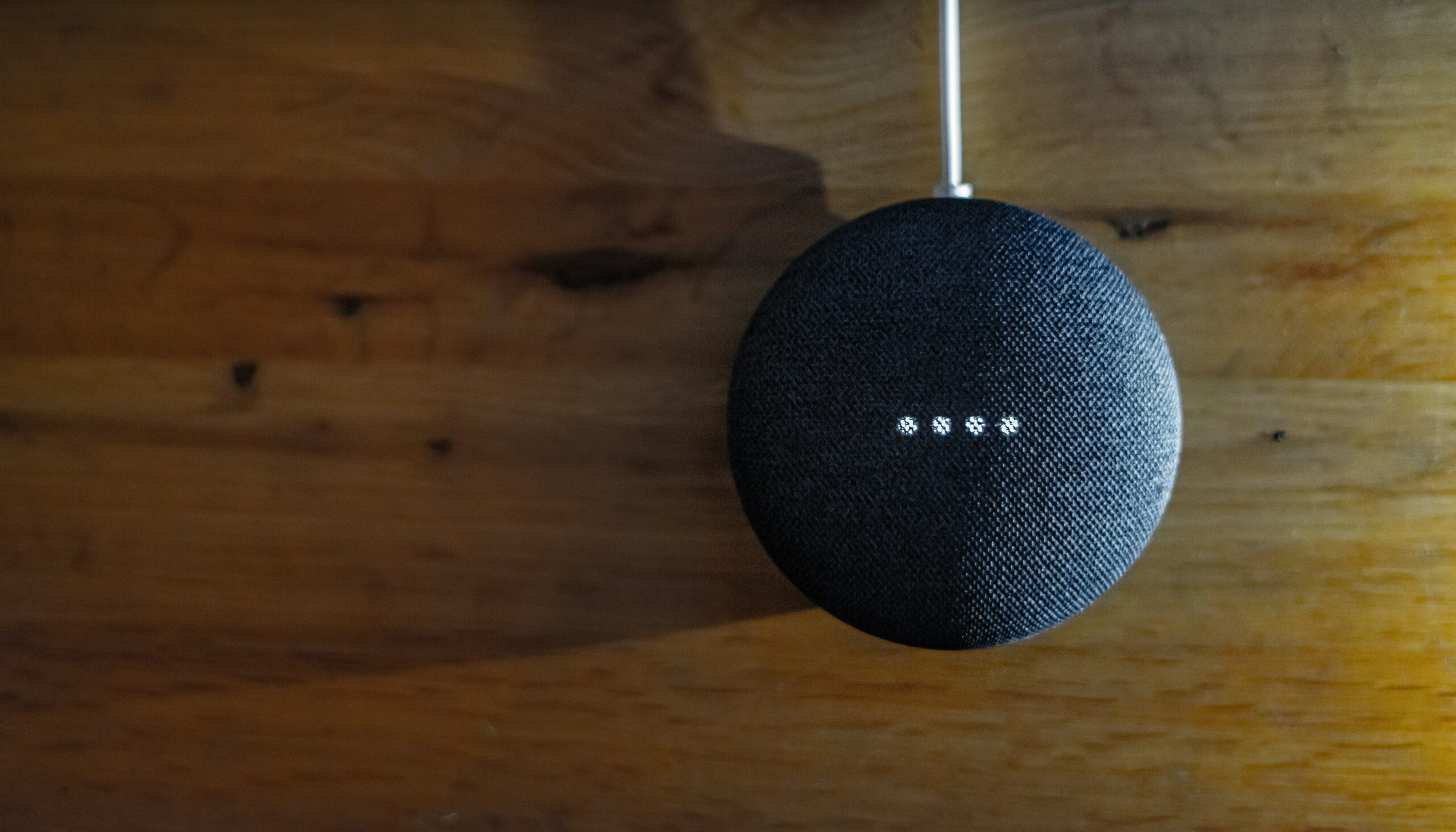Smart home security has revolutionized modern living by offering convenience, efficiency, and advanced security features. However, setting up a seamless smart home system can be daunting for beginners. This guide will walk you through every step, from selecting devices to securing your network.
What is a Smart Home?
A smart home is an interconnected system of devices that use technology to automate and streamline everyday tasks. These devices can control lighting, climate, security, and more, often communicating over the internet. You can manage them through a smartphone app or voice assistant for unparalleled convenience.
Key features of a smart home include:
- Automation: Devices perform tasks automatically or at your command.
- Integration: Systems like lights, locks, and thermostats work together.
- Remote Control: Manage your home from anywhere in the world.
Why Should You Make Your Home Smart? Smart Home Security
The benefits of a smart home extend beyond convenience. Here’s why many households are transitioning to smarter systems:
- Time Savings: Automate routine tasks like turning off lights or adjusting the thermostat.
- Energy Efficiency: Smart thermostats and lights help reduce energy consumption.
- Enhanced Security: Devices like smart locks and cameras increase safety.
- Entertainment: Control music, movies, and more with voice commands.
How to Build Your Smart Home
Creating a smart home requires careful planning to ensure compatibility and efficiency. Follow these steps to lay the foundation for a seamless system.
1. Choose Your Hub
The hub acts as the command center of your smart home. It allows various devices to communicate and work together. Popular hubs include:
- Amazon Echo: Works seamlessly with Alexa-compatible devices.
- Google Nest Hub: Ideal for Google Home ecosystems.
- Apple HomeKit: Best for those in the iOS ecosystem.
Choose a hub that fits your existing devices and preferences.
2. Choose Compatible Devices Smart Home Security
To avoid compatibility issues, ensure your devices are designed to work with your chosen hub. Look for labels like:
- “Works with Alexa”
- “Google Home compatible”
- “Apple HomeKit certified”
This ensures a smoother setup and integration process.
3. Set Up Your Network
A strong and secure network is the backbone of any smart home system. Here are key considerations:
- Router Quality: Invest in a dual-band router with WPA3 encryption.
- Network Segmentation: Create a separate network for smart devices to enhance security.
- Firmware Updates: Keep your router updated to prevent vulnerabilities.
Must-Have Smart Devices Smart Home Security
Adding the right devices can elevate your smart home experience. Here are some essentials:
1. Smart Lights
- Features: Voice control, color changes, and scheduling.
- Popular Brands: Philips Hue, LIFX.
2. Smart Thermostat
- Features: Learns your schedule and optimizes energy usage.
- Popular Brands: Nest, Ecobee.
3. Smart Locks
- Features: Keyless entry, remote locking, and digital keys for guests.
- Popular Brands: August Smart Lock, Schlage Encode.
How to Get Your Devices to Work Together Smart Home Security
A seamless smart home requires integration and automation. Here’s how to make your devices work in harmony:
1. Use Routines
Routines allow you to execute multiple actions with a single command. For instance:
- Say, “Good morning,” to turn on lights, adjust the thermostat, and play your favorite music.
- Use, “Good night,” to lock doors, dim lights, and activate the security system.
2. Group Your Devices
Organizing devices by rooms or zones makes management easier. For example:
- Group all bedroom lights and control them together.
- Combine living room devices like the TV, sound system, and lights.
How to Keep Your Smart Home Safe Smart Home Security
With increased connectivity comes greater responsibility to secure your smart home against cyber threats.
1. Use Strong Passwords
- Replace default passwords immediately.
- Use unique, complex passwords for each device.
- Utilize a password manager for easier management.
2. Keep Software Updated
- Regularly update device firmware to patch vulnerabilities.
- Enable automatic updates where available.
3. Secure Your Network
- Use WPA3 encryption for your Wi-Fi.
- Set up a guest network for visitors.
- Monitor network activity to detect unusual behavior.
Troubleshooting Common Smart Home Problems Smart Home Security
Even the best setups encounter issues. Here’s how to address them:
1. Check Your Network
Weak Wi-Fi signals are a common culprit. Consider:
- Upgrading to a mesh Wi-Fi system.
- Moving the router closer to your devices.
2. Restart Devices
A simple reboot often resolves connectivity or performance issues.
3. Call for Help
Contact customer support or consult a professional if problems persist.
Future Trends in Smart Home Security Technology
Stay ahead by watching these emerging trends:
1. AI-Driven Security
Artificial Intelligence will play a larger role in detecting and preventing cyber threats.
2. Enhanced User Control
Future systems will provide more intuitive dashboards for managing security and device settings.
3. Universal Compatibility
Protocols like Matter will simplify the integration of devices from different brands.
Making Your Home Smarter
Smart homes are transformative, offering convenience, security, and energy efficiency. By following these tips, you can create a system that works seamlessly while ensuring safety and reliability.
Take action today to optimize your smart home experience:
- Choose compatible devices.
- Strengthen your network.
- Secure your setup with strong passwords and regular updates.
Get Expert Help
Smart Home Security
Need assistance setting up or securing your smart home? Contact us today to tailor your system for maximum efficiency and safety. Let ParJenn Technologies help you build the smart home of your dreams.
—
Smart home security has revolutionized modern living by offering convenience, efficiency, and advanced security features. However, setting up a seamless smart home system can be daunting for beginners. This guide will walk you through every step, from selecting devices to securing your network.
What is a Smart Home?
A smart home is an interconnected system of devices that use technology to automate and streamline everyday tasks. These devices can control lighting, climate, security, and more, often communicating over the internet. You can manage them through a smartphone app or voice assistant for unparalleled convenience.
Key features of a smart home include:
- Automation: Devices perform tasks automatically or at your command.
- Integration: Systems like lights, locks, and thermostats work together.
- Remote Control: Manage your home from anywhere in the world.
Why Should You Make Your Home Smart? Smart Home Security
The benefits of a smart home extend beyond convenience. Here’s why many households are transitioning to smarter systems:
- Time Savings: Automate routine tasks like turning off lights or adjusting the thermostat.
- Energy Efficiency: Smart thermostats and lights help reduce energy consumption.
- Enhanced Security: Devices like smart locks and cameras increase safety.
- Entertainment: Control music, movies, and more with voice commands.
How to Build Your Smart Home
Creating a smart home requires careful planning to ensure compatibility and efficiency. Follow these steps to lay the foundation for a seamless system.
1. Choose Your Hub
The hub acts as the command center of your smart home. It allows various devices to communicate and work together. Popular hubs include:
- Amazon Echo: Works seamlessly with Alexa-compatible devices.
- Google Nest Hub: Ideal for Google Home ecosystems.
- Apple HomeKit: Best for those in the iOS ecosystem.
Choose a hub that fits your existing devices and preferences.
2. Choose Compatible Devices Smart Home Security
To avoid compatibility issues, ensure your devices are designed to work with your chosen hub. Look for labels like:
- “Works with Alexa”
- “Google Home compatible”
- “Apple HomeKit certified”
This ensures a smoother setup and integration process.
3. Set Up Your Network
A strong and secure network is the backbone of any smart home system. Here are key considerations:
- Router Quality: Invest in a dual-band router with WPA3 encryption.
- Network Segmentation: Create a separate network for smart devices to enhance security.
- Firmware Updates: Keep your router updated to prevent vulnerabilities.
Must-Have Smart Devices Smart Home Security
Adding the right devices can elevate your smart home experience. Here are some essentials:
1. Smart Lights
- Features: Voice control, color changes, and scheduling.
- Popular Brands: Philips Hue, LIFX.
2. Smart Thermostat
- Features: Learns your schedule and optimizes energy usage.
- Popular Brands: Nest, Ecobee.
3. Smart Locks
- Features: Keyless entry, remote locking, and digital keys for guests.
- Popular Brands: August Smart Lock, Schlage Encode.
How to Get Your Devices to Work Together Smart Home Security
A seamless smart home requires integration and automation. Here’s how to make your devices work in harmony:
1. Use Routines
Routines allow you to execute multiple actions with a single command. For instance:
- Say, “Good morning,” to turn on lights, adjust the thermostat, and play your favorite music.
- Use, “Good night,” to lock doors, dim lights, and activate the security system.
2. Group Your Devices
Organizing devices by rooms or zones makes management easier. For example:
- Group all bedroom lights and control them together.
- Combine living room devices like the TV, sound system, and lights.
How to Keep Your Smart Home Safe Smart Home Security
With increased connectivity comes greater responsibility to secure your smart home against cyber threats.
1. Use Strong Passwords
- Replace default passwords immediately.
- Use unique, complex passwords for each device.
- Utilize a password manager for easier management.
2. Keep Software Updated
- Regularly update device firmware to patch vulnerabilities.
- Enable automatic updates where available.
3. Secure Your Network
- Use WPA3 encryption for your Wi-Fi.
- Set up a guest network for visitors.
- Monitor network activity to detect unusual behavior.
Troubleshooting Common Smart Home Problems Smart Home Security
Even the best setups encounter issues. Here’s how to address them:
1. Check Your Network
Weak Wi-Fi signals are a common culprit. Consider:
- Upgrading to a mesh Wi-Fi system.
- Moving the router closer to your devices.
2. Restart Devices
A simple reboot often resolves connectivity or performance issues.
3. Call for Help
Contact customer support or consult a professional if problems persist.
Future Trends in Smart Home Security Technology
Stay ahead by watching these emerging trends:
1. AI-Driven Security
Artificial Intelligence will play a larger role in detecting and preventing cyber threats.
2. Enhanced User Control
Future systems will provide more intuitive dashboards for managing security and device settings.
3. Universal Compatibility
Protocols like Matter will simplify the integration of devices from different brands.
Making Your Home Smarter
Smart homes are transformative, offering convenience, security, and energy efficiency. By following these tips, you can create a system that works seamlessly while ensuring safety and reliability.
Take action today to optimize your smart home experience:
- Choose compatible devices.
- Strengthen your network.
- Secure your setup with strong passwords and regular updates.
Get Expert Help
Smart Home Security
Need assistance setting up or securing your smart home? Contact us today to tailor your system for maximum efficiency and safety. Let ParJenn Technologies help you build the smart home of your dreams.
—
Smart home security has revolutionized modern living by offering convenience, efficiency, and advanced security features. However, setting up a seamless smart home system can be daunting for beginners. This guide will walk you through every step, from selecting devices to securing your network.
What is a Smart Home?
A smart home is an interconnected system of devices that use technology to automate and streamline everyday tasks. These devices can control lighting, climate, security, and more, often communicating over the internet. You can manage them through a smartphone app or voice assistant for unparalleled convenience.
Key features of a smart home include:
- Automation: Devices perform tasks automatically or at your command.
- Integration: Systems like lights, locks, and thermostats work together.
- Remote Control: Manage your home from anywhere in the world.
Why Should You Make Your Home Smart? Smart Home Security
The benefits of a smart home extend beyond convenience. Here’s why many households are transitioning to smarter systems:
- Time Savings: Automate routine tasks like turning off lights or adjusting the thermostat.
- Energy Efficiency: Smart thermostats and lights help reduce energy consumption.
- Enhanced Security: Devices like smart locks and cameras increase safety.
- Entertainment: Control music, movies, and more with voice commands.
How to Build Your Smart Home
Creating a smart home requires careful planning to ensure compatibility and efficiency. Follow these steps to lay the foundation for a seamless system.
1. Choose Your Hub
The hub acts as the command center of your smart home. It allows various devices to communicate and work together. Popular hubs include:
- Amazon Echo: Works seamlessly with Alexa-compatible devices.
- Google Nest Hub: Ideal for Google Home ecosystems.
- Apple HomeKit: Best for those in the iOS ecosystem.
Choose a hub that fits your existing devices and preferences.
2. Choose Compatible Devices Smart Home Security
To avoid compatibility issues, ensure your devices are designed to work with your chosen hub. Look for labels like:
- “Works with Alexa”
- “Google Home compatible”
- “Apple HomeKit certified”
This ensures a smoother setup and integration process.
3. Set Up Your Network
A strong and secure network is the backbone of any smart home system. Here are key considerations:
- Router Quality: Invest in a dual-band router with WPA3 encryption.
- Network Segmentation: Create a separate network for smart devices to enhance security.
- Firmware Updates: Keep your router updated to prevent vulnerabilities.
Must-Have Smart Devices Smart Home Security
Adding the right devices can elevate your smart home experience. Here are some essentials:
1. Smart Lights
- Features: Voice control, color changes, and scheduling.
- Popular Brands: Philips Hue, LIFX.
2. Smart Thermostat
- Features: Learns your schedule and optimizes energy usage.
- Popular Brands: Nest, Ecobee.
3. Smart Locks
- Features: Keyless entry, remote locking, and digital keys for guests.
- Popular Brands: August Smart Lock, Schlage Encode.
How to Get Your Devices to Work Together Smart Home Security
A seamless smart home requires integration and automation. Here’s how to make your devices work in harmony:
1. Use Routines
Routines allow you to execute multiple actions with a single command. For instance:
- Say, “Good morning,” to turn on lights, adjust the thermostat, and play your favorite music.
- Use, “Good night,” to lock doors, dim lights, and activate the security system.
2. Group Your Devices
Organizing devices by rooms or zones makes management easier. For example:
- Group all bedroom lights and control them together.
- Combine living room devices like the TV, sound system, and lights.
How to Keep Your Smart Home Safe Smart Home Security
With increased connectivity comes greater responsibility to secure your smart home against cyber threats.
1. Use Strong Passwords
- Replace default passwords immediately.
- Use unique, complex passwords for each device.
- Utilize a password manager for easier management.
2. Keep Software Updated
- Regularly update device firmware to patch vulnerabilities.
- Enable automatic updates where available.
3. Secure Your Network
- Use WPA3 encryption for your Wi-Fi.
- Set up a guest network for visitors.
- Monitor network activity to detect unusual behavior.
Troubleshooting Common Smart Home Problems Smart Home Security
Even the best setups encounter issues. Here’s how to address them:
1. Check Your Network
Weak Wi-Fi signals are a common culprit. Consider:
- Upgrading to a mesh Wi-Fi system.
- Moving the router closer to your devices.
2. Restart Devices
A simple reboot often resolves connectivity or performance issues.
3. Call for Help
Contact customer support or consult a professional if problems persist.
Future Trends in Smart Home Security Technology
Stay ahead by watching these emerging trends:
1. AI-Driven Security
Artificial Intelligence will play a larger role in detecting and preventing cyber threats.
2. Enhanced User Control
Future systems will provide more intuitive dashboards for managing security and device settings.
3. Universal Compatibility
Protocols like Matter will simplify the integration of devices from different brands.
Making Your Home Smarter
Smart homes are transformative, offering convenience, security, and energy efficiency. By following these tips, you can create a system that works seamlessly while ensuring safety and reliability.
Take action today to optimize your smart home experience:
- Choose compatible devices.
- Strengthen your network.
- Secure your setup with strong passwords and regular updates.
Get Expert Help
Smart Home Security
Need assistance setting up or securing your smart home? Contact us today to tailor your system for maximum efficiency and safety. Let ParJenn Technologies help you build the smart home of your dreams.
—
Smart home security has revolutionized modern living by offering convenience, efficiency, and advanced security features. However, setting up a seamless smart home system can be daunting for beginners. This guide will walk you through every step, from selecting devices to securing your network.
What is a Smart Home?
A smart home is an interconnected system of devices that use technology to automate and streamline everyday tasks. These devices can control lighting, climate, security, and more, often communicating over the internet. You can manage them through a smartphone app or voice assistant for unparalleled convenience.
Key features of a smart home include:
- Automation: Devices perform tasks automatically or at your command.
- Integration: Systems like lights, locks, and thermostats work together.
- Remote Control: Manage your home from anywhere in the world.
Why Should You Make Your Home Smart? Smart Home Security
The benefits of a smart home extend beyond convenience. Here’s why many households are transitioning to smarter systems:
- Time Savings: Automate routine tasks like turning off lights or adjusting the thermostat.
- Energy Efficiency: Smart thermostats and lights help reduce energy consumption.
- Enhanced Security: Devices like smart locks and cameras increase safety.
- Entertainment: Control music, movies, and more with voice commands.
How to Build Your Smart Home
Creating a smart home requires careful planning to ensure compatibility and efficiency. Follow these steps to lay the foundation for a seamless system.
1. Choose Your Hub
The hub acts as the command center of your smart home. It allows various devices to communicate and work together. Popular hubs include:
- Amazon Echo: Works seamlessly with Alexa-compatible devices.
- Google Nest Hub: Ideal for Google Home ecosystems.
- Apple HomeKit: Best for those in the iOS ecosystem.
Choose a hub that fits your existing devices and preferences.
2. Choose Compatible Devices Smart Home Security
To avoid compatibility issues, ensure your devices are designed to work with your chosen hub. Look for labels like:
- “Works with Alexa”
- “Google Home compatible”
- “Apple HomeKit certified”
This ensures a smoother setup and integration process.
3. Set Up Your Network
A strong and secure network is the backbone of any smart home system. Here are key considerations:
- Router Quality: Invest in a dual-band router with WPA3 encryption.
- Network Segmentation: Create a separate network for smart devices to enhance security.
- Firmware Updates: Keep your router updated to prevent vulnerabilities.
Must-Have Smart Devices Smart Home Security
Adding the right devices can elevate your smart home experience. Here are some essentials:
1. Smart Lights
- Features: Voice control, color changes, and scheduling.
- Popular Brands: Philips Hue, LIFX.
2. Smart Thermostat
- Features: Learns your schedule and optimizes energy usage.
- Popular Brands: Nest, Ecobee.
3. Smart Locks
- Features: Keyless entry, remote locking, and digital keys for guests.
- Popular Brands: August Smart Lock, Schlage Encode.
How to Get Your Devices to Work Together Smart Home Security
A seamless smart home requires integration and automation. Here’s how to make your devices work in harmony:
1. Use Routines
Routines allow you to execute multiple actions with a single command. For instance:
- Say, “Good morning,” to turn on lights, adjust the thermostat, and play your favorite music.
- Use, “Good night,” to lock doors, dim lights, and activate the security system.
2. Group Your Devices
Organizing devices by rooms or zones makes management easier. For example:
- Group all bedroom lights and control them together.
- Combine living room devices like the TV, sound system, and lights.
How to Keep Your Smart Home Safe Smart Home Security
With increased connectivity comes greater responsibility to secure your smart home against cyber threats.
1. Use Strong Passwords
- Replace default passwords immediately.
- Use unique, complex passwords for each device.
- Utilize a password manager for easier management.
2. Keep Software Updated
- Regularly update device firmware to patch vulnerabilities.
- Enable automatic updates where available.
3. Secure Your Network
- Use WPA3 encryption for your Wi-Fi.
- Set up a guest network for visitors.
- Monitor network activity to detect unusual behavior.
Troubleshooting Common Smart Home Problems Smart Home Security
Even the best setups encounter issues. Here’s how to address them:
1. Check Your Network
Weak Wi-Fi signals are a common culprit. Consider:
- Upgrading to a mesh Wi-Fi system.
- Moving the router closer to your devices.
2. Restart Devices
A simple reboot often resolves connectivity or performance issues.
3. Call for Help
Contact customer support or consult a professional if problems persist.
Future Trends in Smart Home Security Technology
Stay ahead by watching these emerging trends:
1. AI-Driven Security
Artificial Intelligence will play a larger role in detecting and preventing cyber threats.
2. Enhanced User Control
Future systems will provide more intuitive dashboards for managing security and device settings.
3. Universal Compatibility
Protocols like Matter will simplify the integration of devices from different brands.
Making Your Home Smarter
Smart homes are transformative, offering convenience, security, and energy efficiency. By following these tips, you can create a system that works seamlessly while ensuring safety and reliability.
Take action today to optimize your smart home experience:
- Choose compatible devices.
- Strengthen your network.
- Secure your setup with strong passwords and regular updates.
Get Expert Help
Smart Home Security
Need assistance setting up or securing your smart home? Contact us today to tailor your system for maximum efficiency and safety. Let ParJenn Technologies help you build the smart home of your dreams.
—





